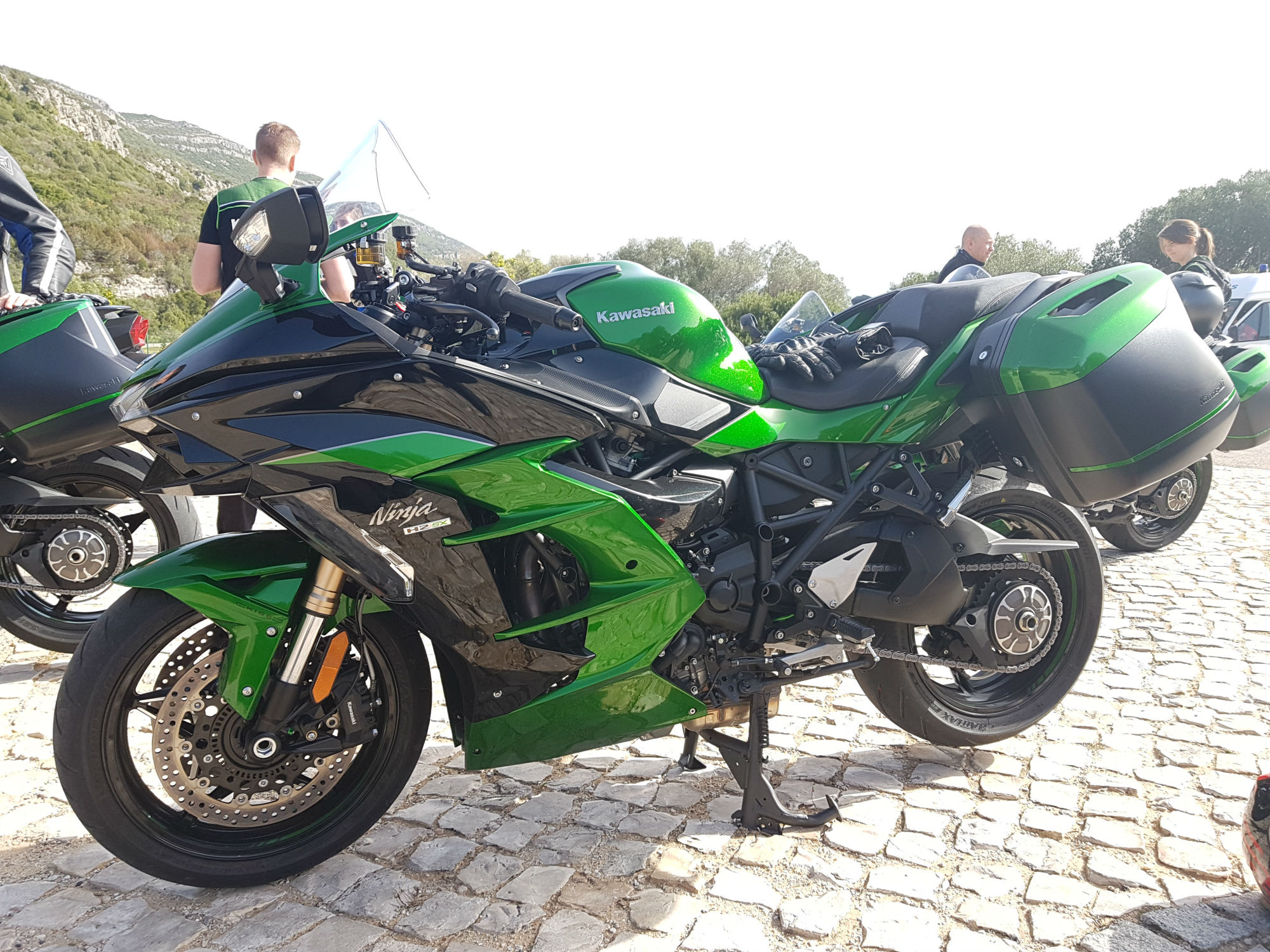
VISORDOWN’S Steve Farrell is in Portugal to ride Kawasaki’s new Ninja H2 SX. Here are his first thoughts after getting off the 200hp supercharged sports-tourer:
‘Bigger-capacity engines with a modest increase in power; that seems to be the path motorcycle development has been taking to retain performance while improving efficiency.
‘Supercharging is different, allowing greater performance and efficiency from a given capacity. That, Kawasaki is keen to stress, is the point of the Ninja H2 SX: performance and economy. Not to be extreme, like the Ninja H2 it takes its engine from, but to offer more power and torque – 200hp and 101lbft – but with the fuel efficiency of a Versys 1000, at 49mpg.
‘It’s a new sibling to the Z1000SX, “not a Ninja H2 with a pillion seat,” the firm was even keener to stress. It’s almost as if they’re slightly worried some sports-tourer customers might be put off by the extremes of performance associated with supercharging.
‘They shouldn’t be put off. The Ninja H2 SX isn’t aggressive. It’s just a super-smooth, super-powerful four-cylinder.
‘There’s a brilliantly extreme top-end available when you want it but the journey to it is linear, easily manageable.
‘I wouldn’t have known it was supercharged at all if it wasn’t for the little “chirp” sound it sometimes makes between 10,000rpm and the red line at 12,000. That’s the supercharger rotor blade tips breaking the sound barrier, Kawasaki says. It would take a long time to tire of explaining that to people.
‘Kawasaki wheeled out the hi-spec Ninja H2 SX SE edition for the launch ride. It costs £18,099 – £3,000 more than the base edition – and comes with a long list of extras including a TFT dash, cornering headlights and heated grips.
‘The SE edition also gets an up/down quick-shifter. It’s not the absolute smoothest I’ve tried but neither is it far off.
‘Both editions have traction control, cruise control, an assist and slipper clutch and three power modes: Full, medium or low.
‘The initial throttle response in the full power mode could be smooth when handled gently in the mid-range but also sometimes felt a little jerky at lower rpm, for example rolling on and off in traffic. The medium and low modes smoothen it out but cut power, to 75% throughout the range in medium and 50% in low.
‘The radial-mounted front brake calipers have all the power and progression you’d hope for on machine making 200hp. One finger on the lever is enough.
‘The riding position’s bang-on sports-tourer territory: sporty, with a bit of weight on your arms, but not too much. Today involved at least four hours in the saddle and I was still reasonably comfortable by the end, beginning to shift around a little in the seat but not yet desperate to get off. I’m 5’9” and found the screen, which is taller on the SE edition than on the base model, gave sufficient protection. Leg-room is okay too.
‘The suspension seemed more touring than sport-focused and a bit of effort was needed to make the new steel trellis chassis change direction quickly on the twistier roads of the test ride. The bike weighs 260kg after all, and the ones tested were fitted with the accessory panniers. That weight’s much closer to the ZZR1400’s 269kg than the Z1000SX’s 235.
‘But the Z1000SX can’t deliver 200hp.
‘That seems to be the Ninja H2 SX’s jewel – its super-charged engine, delivering ZZR power but with better fuel economy. The average fuel-consumption meter said 47.8mpg by the end of the test ride, meaning a range of about 200 miles from the 19-litre-tank.
‘That’s the future of supercharging. Not just extreme power, and not ever-increasing engine capacities, but better performance and economy from the capacities we’ve got. That’s why the Ninja H2 SX is exciting.
‘I’ll get another chance to explore the extremes of the bike’s performance tomorrow, when we’re due to do some acceleration tests on track at Estoril. I’ll bring you a full review after that.’
[“Source-visordown”]




